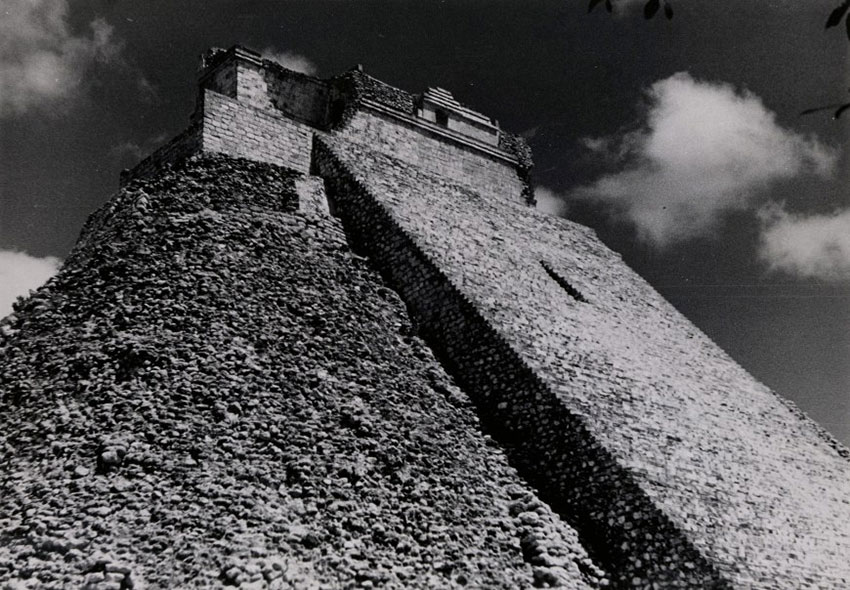Josef Albers was a German-born American artist who visited Mexico and South America about a dozen times between 1935 and 1967.
Josef Albers was a natural educator
Joseph Albers was born in Bottrop, Westphalia, Germany on March 19, 1888.
Albers started his art career as a printmaker and then glassmaker. He began teaching at the Bauhaus school in 1922. The Bauhaus faculty included leaders of modern art such as Wassily Kandinsky and Paul Klee.
When the Nazis closed the school in 1933, Albers emigrated to the United States. He got a job teaching at Black Mountain College in North Carolina where his students were young artists such as Robert Rauschenberg and Cy Twombly.
Albers led the department of design at Yale University from 1950 – 1958.
Albers’ art education book Interaction of Color (1963) has been influential in teaching color theory to two generations of designers. The text is still in use.
Josef Albers in Mexico at the Guggenheim Museum
Albers wasn’t primarily a photographer, but his photography work is exceptional. You can see how his structured German mind was inspired by the geometric abstractions of ancient Latin American architecture.
Albers was greatly impressed by the ruins of American civilizations he saw in Mexico and Peru. It seems that in a way, he envisioned the ancient geometric forms as simple printmaking blocks.
The exhibition is organized by Lauren Hinkson, Associate Curator, Collections.
While studying the Guggenheim collection, Hinkson noticed similarities between Post-War and Contemporary art, and the Joseph Albers photographs of his visits to Latin America.
Hinkson deduced the connection. Albers was an instructor at Bauhaus, the legendary German school of modern design. When he came to the Americas to escape the Nazi threat, Albers taught at Black Mountain college and Yale. There he became the teacher of many artists who would become important members of the Post-War and Contemporary American art pantheon.
Albers was inspired by the clarity of the ancient geometric designs. Albers taught what he learned to these young Americans.
Lauren Hinkson has uncovered an important insight. Albers never spoke publicly about his Aztec, Maya, and Inca inspiration. Looking at the exhibition, the relationship is obvious. The connection is there, but Hinkson had to uncover it.
Josef Albers in Mexico is at the Guggenheim Museum in Manhattan’s Upper East Side from November 3 , 2017 – February 18, 2018.

